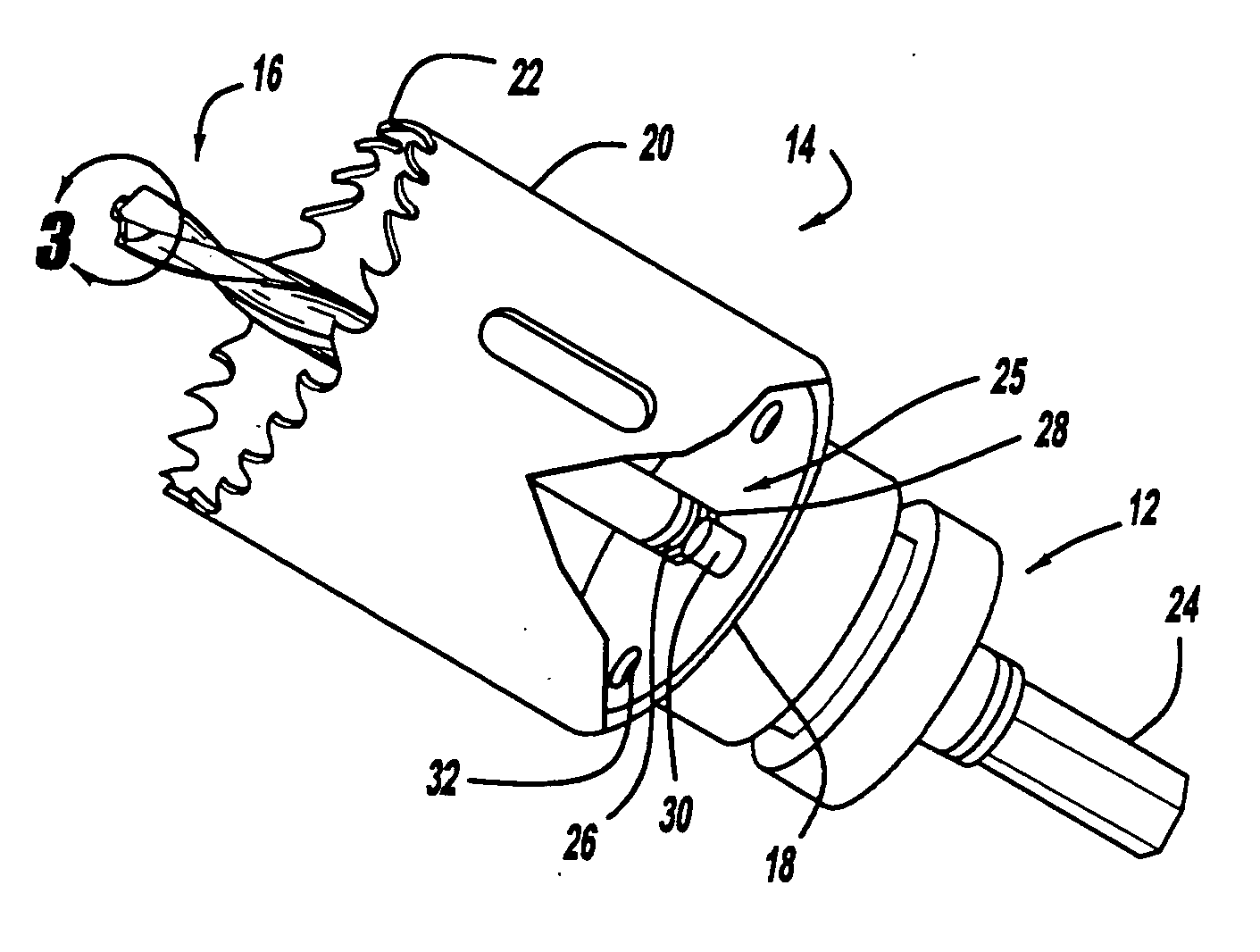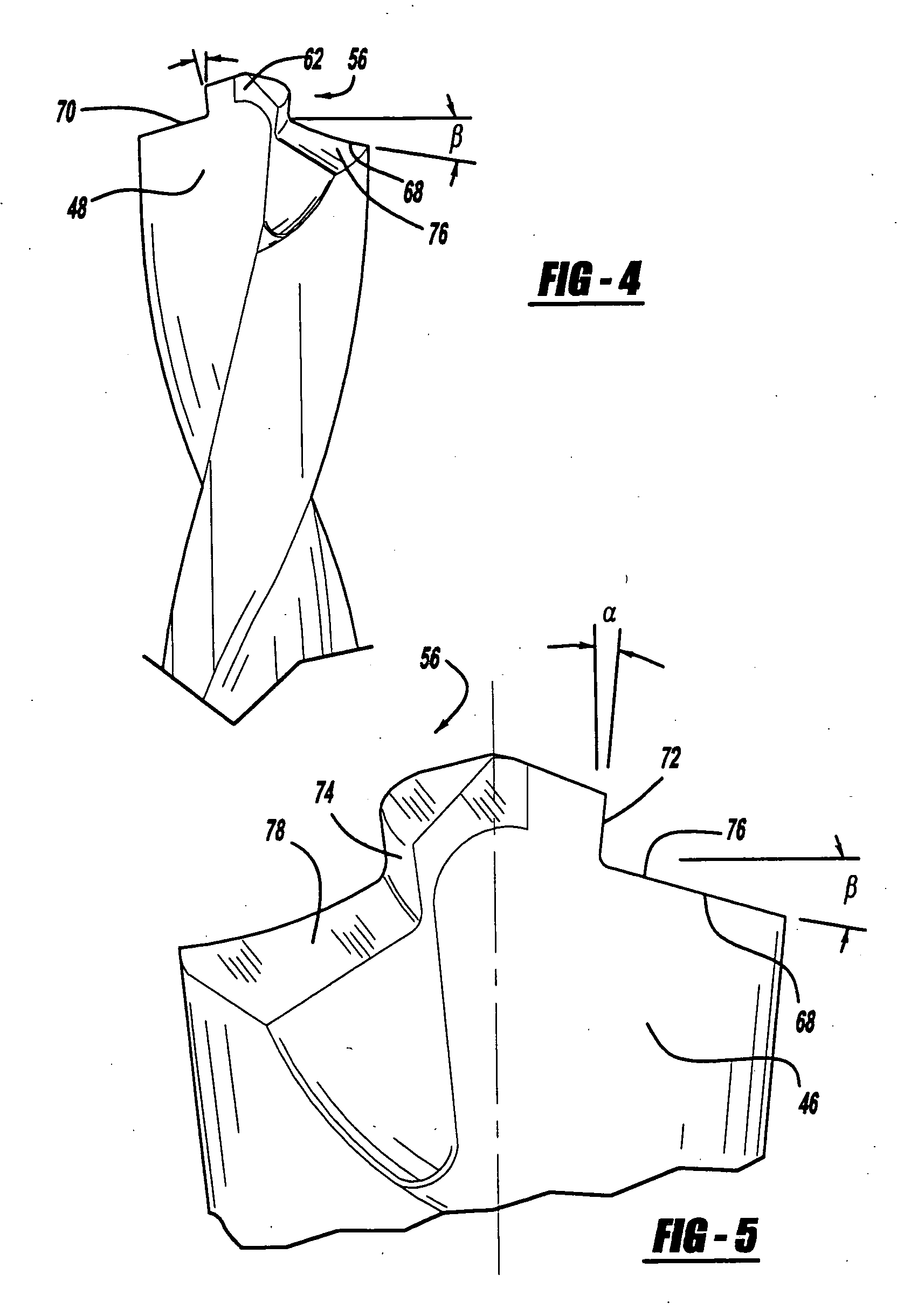Hole saw having a drill bit with a pilot tip
- Summary
- Abstract
- Description
- Claims
- Application Information
AI Technical Summary
Benefits of technology
Problems solved by technology
Method used
Image
Examples
Embodiment Construction
[0021] The following description of the preferred embodiment(s) is merely exemplary in nature and is in no way intended to limit the invention, its application, or uses.
[0022] Turning to the figures, a hole saw is illustrated and designated with the reference numeral 10. The hole saw includes an arbor 12 coupled with a cup shaped cutting member 14. A drill bit 16 extends from the arbor 12 and cup shaped cutting member 14. The cup shaped cutting member 14 includes a base 18 with a unitary skirt 20. A plurality of teeth 22 are formed in the cup shaped cutting member at the end of the skirt 20.
[0023] The arbor 12 includes a shank 24 which secures into a drill or the like. The arbor 12 also includes a retaining portion 25 to retain the cup shaped cutting member 14 onto the arbor 12. The retaining portion 25 generally includes an extended threaded nipple 26 which is received into a threaded hole 28 in the base 18 of the cup shaped cutting member 14. This retains the cup shaped cutting ...
PUM
| Property | Measurement | Unit |
|---|---|---|
| Angle | aaaaa | aaaaa |
| Angle | aaaaa | aaaaa |
| Angle | aaaaa | aaaaa |
Abstract
Description
Claims
Application Information
 Login to View More
Login to View More - R&D
- Intellectual Property
- Life Sciences
- Materials
- Tech Scout
- Unparalleled Data Quality
- Higher Quality Content
- 60% Fewer Hallucinations
Browse by: Latest US Patents, China's latest patents, Technical Efficacy Thesaurus, Application Domain, Technology Topic, Popular Technical Reports.
© 2025 PatSnap. All rights reserved.Legal|Privacy policy|Modern Slavery Act Transparency Statement|Sitemap|About US| Contact US: help@patsnap.com



